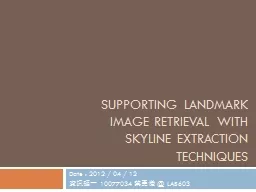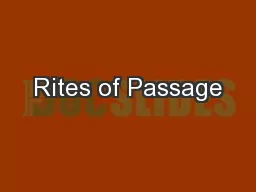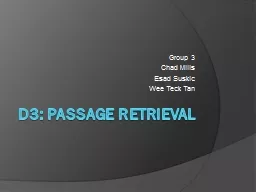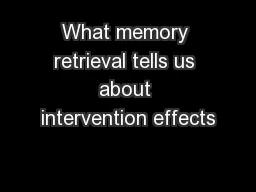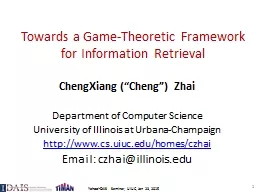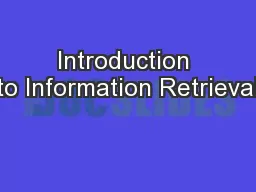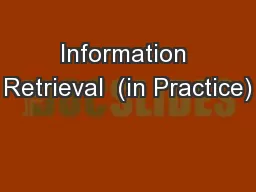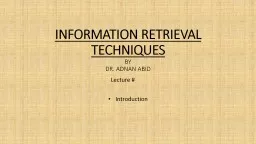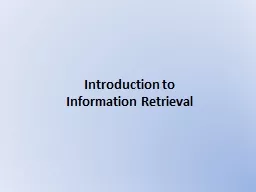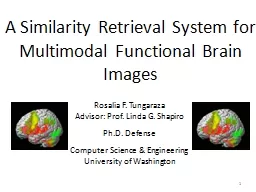PPT-Passage Retrieval
Author : lindy-dunigan | Published Date : 2017-10-23
and Reranking Ling573 NLP Systems and Applications May 3 2011 Upcoming Talks Edith Law Friday 330 CSE 303 Human Computation Core Research Questions and Opportunities
Presentation Embed Code
Download Presentation
Download Presentation The PPT/PDF document "Passage Retrieval" is the property of its rightful owner. Permission is granted to download and print the materials on this website for personal, non-commercial use only, and to display it on your personal computer provided you do not modify the materials and that you retain all copyright notices contained in the materials. By downloading content from our website, you accept the terms of this agreement.
Passage Retrieval: Transcript
Download Rules Of Document
"Passage Retrieval"The content belongs to its owner. You may download and print it for personal use, without modification, and keep all copyright notices. By downloading, you agree to these terms.
Related Documents



